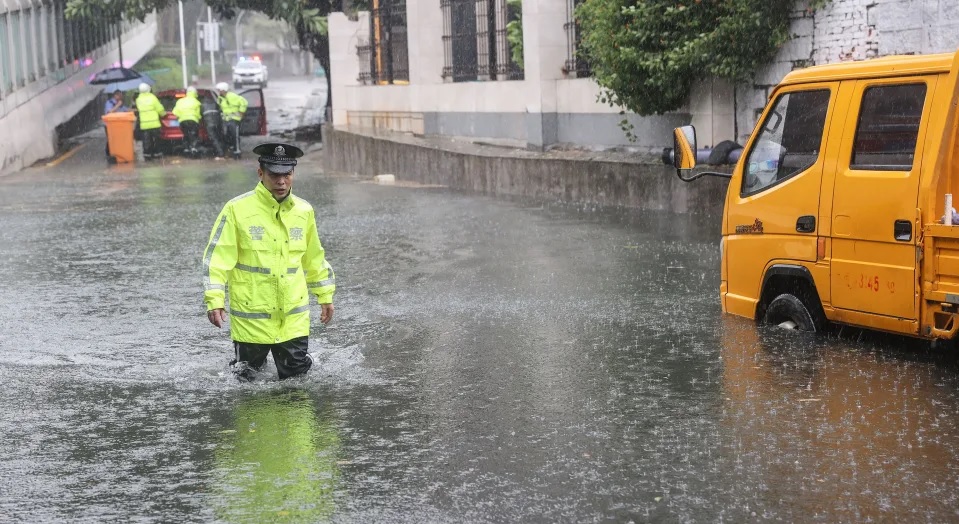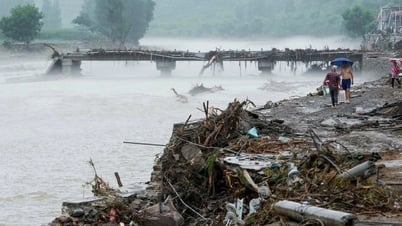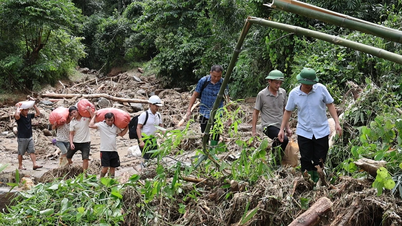Doksuri, which made landfall in Fujian province on Friday morning with winds of up to 175 km/h, was felt further north, according to China's meteorological services. Fearing flooding, Beijing issued an orange alert, the second-highest in a four-tier system.

An area flooded by Typhoon Doksuri in Xiamen, Fujian, China. Photo: AFP
Several of the city's parks, lakes and riverside paths were closed as a precaution, with city authorities warning on Saturday that the downpour could cause flooding worse than that in July 2012, when 79 people died and tens of thousands were evacuated.
Heavy rain was reported in the capital Beijing on Saturday afternoon and is expected to last until Tuesday. Neighboring Hebei province, where heavy rain and strong winds are expected, has issued its highest alert in some areas, with the weather service warning that rainfall could exceed 60 mm.
In Fujian's provincial capital of Fuzhou, authorities ordered residents not to leave their homes unless necessary on Saturday. The coastal province of Shandong and the megacity of Tianjin also felt the deluge.
More than 724,600 people in 84 counties in Fujian have been affected, with 124,400 residents evacuated. About 262 hectares of crops have been damaged, Xinhua reported on Friday.
Super Typhoon Doksuri had previously swept across the Pacific Ocean earlier this week, but weakened as it approached the Philippines. The storm killed at least 13 people in the Philippines and capsized a ferry, killing at least 26 people.
The storm is moving northwest toward China. Although it is forecast to have weakened somewhat, it is still bringing huge waves and strong winds to the southeastern part of the country.
China has been experiencing extreme weather conditions this summer. In addition to the floods, Beijing and surrounding areas broke temperature records in early July, with local temperatures exceeding 40 degrees Celsius.
Bui Huy (according to Xinhua News Agency AFP, SCMP)
Source







































































































Comment (0)